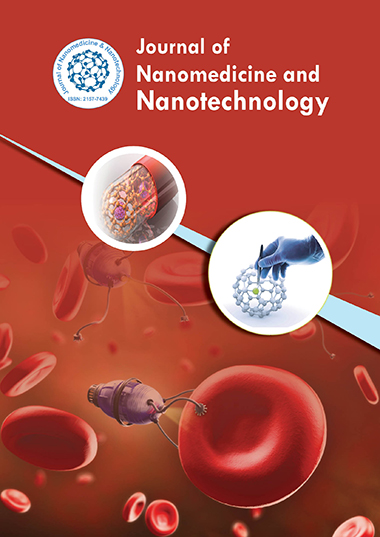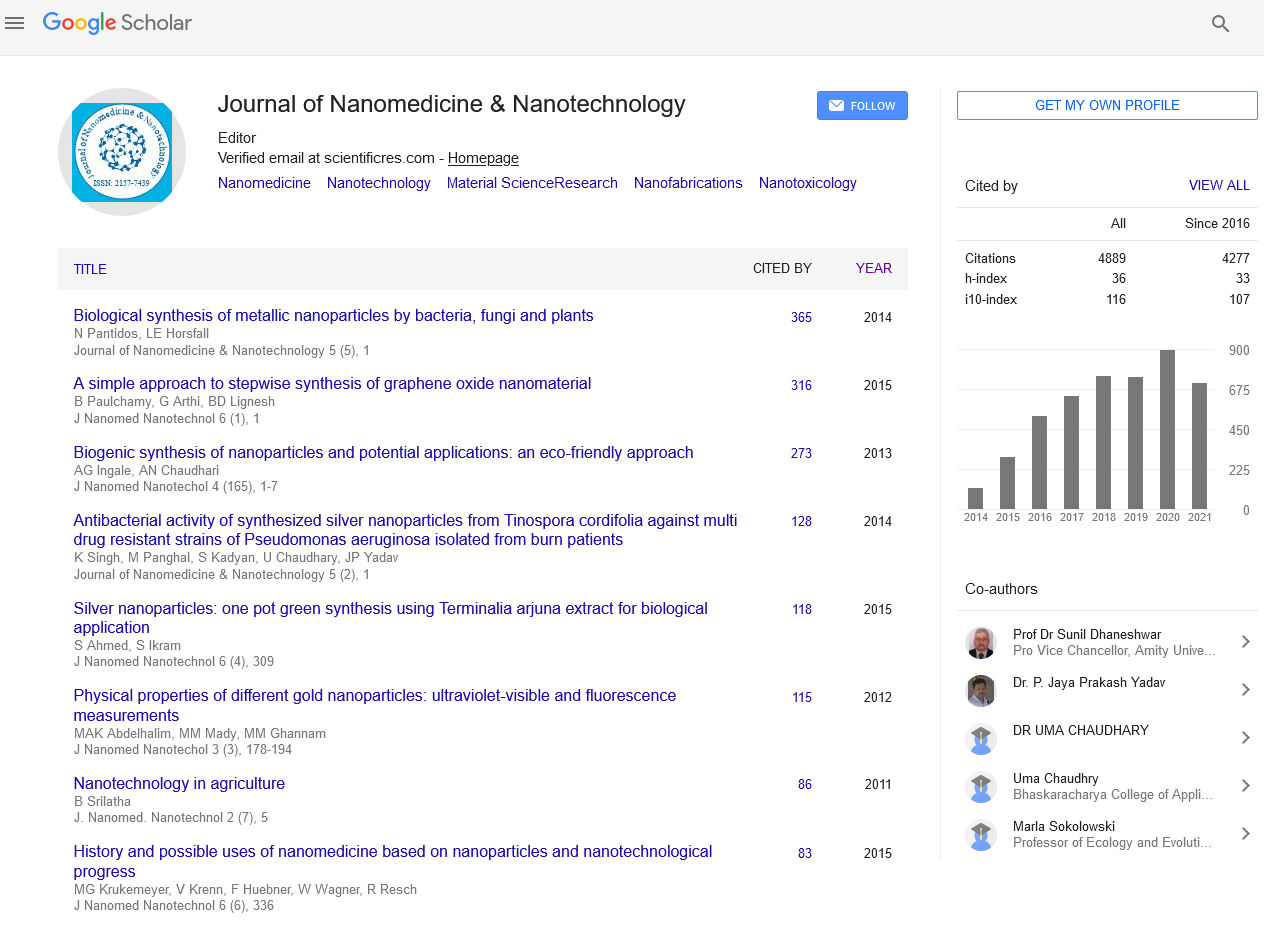Indexed In
- Open J Gate
- Genamics JournalSeek
- Academic Keys
- JournalTOCs
- ResearchBible
- China National Knowledge Infrastructure (CNKI)
- Scimago
- Ulrich's Periodicals Directory
- Electronic Journals Library
- RefSeek
- Hamdard University
- EBSCO A-Z
- OCLC- WorldCat
- SWB online catalog
- Virtual Library of Biology (vifabio)
- Publons
- MIAR
- Scientific Indexing Services (SIS)
- Euro Pub
- Google Scholar
Useful Links
Share This Page
Journal Flyer

Open Access Journals
- Agri and Aquaculture
- Biochemistry
- Bioinformatics & Systems Biology
- Business & Management
- Chemistry
- Clinical Sciences
- Engineering
- Food & Nutrition
- General Science
- Genetics & Molecular Biology
- Immunology & Microbiology
- Medical Sciences
- Neuroscience & Psychology
- Nursing & Health Care
- Pharmaceutical Sciences
Enhanced catalytic activity of MoS2 nanoclusters for the hydrogen evolution reaction by Ni-doping and sulfur enrichment
2nd World Congress on Nanoscience and Nanotechnology
August 10-11, 2018 Osaka, Japan
Yubiao Niu, Richard E Palmer, Daniel Escalera-Lopez and Neil V Rees
Swansea University Bay Campus, UK
University of Birmingham, UK
Scientific Tracks Abstracts: J Nanomed Nanotechnol
Abstract:
The discovery of highly active and low-cost electrochemical catalysts is a crucial challenge for the development of efficient hydrogen technologies. Molybdenum disulfide (MoS2) is an earth-abundant material and considered as a promising candidate for electrocatalytic applications such as the Hydrogen Evolution Reaction (HER). DFT calculations have demonstrated that transition metal (Fe, Co, Ni) doping of MoS2 should increase the activity in the HER. Here we report a novel one-step strategy for the preparation of Ni-doped transition metal-MoS2-x hybrid clusters based on dual-target magnetron sputtering and gas condensation. The structure and composition of the clusters are analyzed by aberration-corrected Scanning Transmission Electron Microscope (STEM) in High-Angle Annular Dark Field (HAADF) mode coupled with EDX. From the electrochemical measurements, the Ni-MoS2-x nanoclusters display a favorable 100 mV shift in the HER onset potential and an almost 3-fold increase in exchange current density compared with undoped MoS2 clusters. It is believed that sulfur atoms at the edge sites of the MoS2 layers make the main contribution to the HER catalytic activity. Thus we have also explored sulfur-enrichment of (mass-selected) MoS2-x clusters via sulfur evaporation and cluster annealing under vacuum conditions. Sulfur addition leads to MoS2+x clusters with well-developed crystalline structure instead of poorly ordered layer structures and significantly enhances the activity in the HER, with 200 mV shifts to lower HER onset potentials and more than 30-fold increase in exchange current density. Recent Publications 1. D Escalera-López, Y Niu, S Park, M Isaacs, K Wilson, R E Palmer, N V Rees (2018) Hydrogen evolution enhancement of ultra-low loading, size-selected molybdenum sulfide nanoclusters by sulfur enrichment. Applied Catalysis B: Environmental; 235: 84-91. 2. Y Niu, P Schlexer, B Sebok, I Chorkendorff, G Pacchioni, R E Palmer (2018) Reduced Sintering of Mass-selected Au Clusters on SiO2 by Alloying with Ti: An Aberration-corrected STEM and Computational Study. Nanoscale; 10: 2363-2370.
Biography :
Yubiao Niu is a Research Officer in Nanomaterials Lab of Swansea University. His research interest focuses on the development of innovative nanomaterials from earth-abundant materials for heterogeneous catalysis to alleviate the problems with the availability of precious metals as catalyst including the fabrication of nanomaterials, the fundamental studies of nanostructures and the catalytic measurements. He has expertise in nanocluster fabrication with cluster beam source and (aberration-corrected) Scanning Transmission Electron Microscopy (STEM) together with Energy Dispersive X-ray (EDX) spectroscopy and Electron Energy Loss Spectroscopy (EELS).
E-mail: yubiao.niu@swansea.ac.uk


